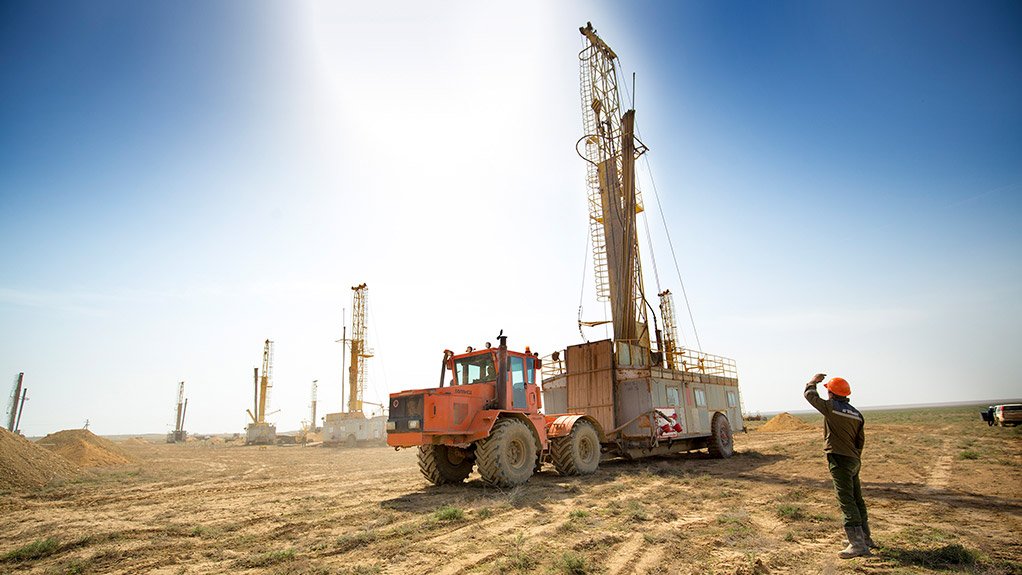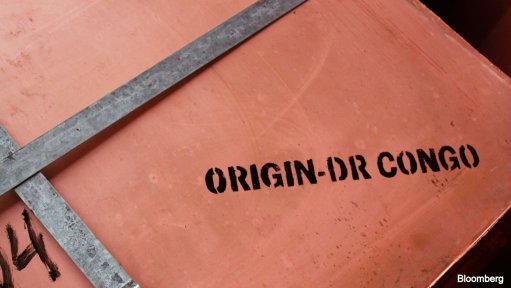Global uranium supply sufficient to meet future demand – NEA
Intergovernmental agency, the Nuclear Energy Association (NEA), says the world’s supply of uranium is more than adequate to meet projected requirements for the foreseeable future, regardless of the role that nuclear energy will play in meeting future electricity demand and global climate objectives.
“However, significant investment and technical expertise will be required to ensure these uranium resources can be brought into production in a timely manner, including from mines currently under care and maintenance,” the agency adds.
These findings were reported in the latest edition of ‘Uranium Resources: Production and Demand', also known as the Red Book, which is a world reference guide that is jointly prepared by the NEA and the International Atomic Energy Agency and published every two years.
The Red Book states that the world’s identified uranium resources are estimated at about 6.1-million tonnes of uranium metal, which can be recovered at $130/kg or less.
FUTURE DEMAND
On January 1, 2017, 318 reactors were connected to the grid in 19 Organization for Economic Cooperation and Development (OECD) countries, constituting about 76% of the world’s nuclear electricity generating capacity.
At the time, 16 reactors were under construction.
The global total of reactors stood at 449 as at January 1, 2017, with 64 under construction. The 2016 uranium requirement was 45 340 t in OECD countries and 62 825 t for the world as a whole.
Forecasts of installed capacity and uranium requirements, although uncertain owing to the role of nuclear in the generation mix being undetermined, continue to point to long-term growth.
Installed nuclear capacity is projected to increase from about 391 GWe net at the beginning of 2017 to between about 331 GWe (low case) and 568 GWe (high case) by 2035.
The low case represents a decrease of about 15% from 2016 nuclear generating capacity, while the high case represents an increase of about 45%.
By 2025, the high case scenario projection sees an increase of 10%, indicating that significant expansion activities are already under way in several countries.
The low case installed nuclear capacity projection to 2025 has decreased by 10% compared with the last edition of the Red Book in 2016.
The low case scenario incorporates the current policy of the French government to reduce the nuclear generation share of electricity production, strengthened phase-out policies in Belgium and Germany and reduced expectations of capacity additions or delays in nuclear projects in several countries, including India, Korea, Romania, Sweden, Turkey and the US.
In Japan, installed nuclear capacity is projected to decline from 39.8 GWe in 2016 to about 9.7 GWe by 2035 (low case) as reactors are permanently shut down, owing to a range of factors including location near active faults, technology, age and local political resistance.
The high case projection to 2025 has declined by 15% compared with projections made in 2016, as policies concerning climate change mitigation are still unclear and financing is uncertain. Expectations of nuclear capacity additions in a number of countries, including Argentina, Armenia, Brazil, China, the Czech Republic, Korea, Turkey, Ukraine, the UK and the US, have been delayed or reduced.
Construction launches have been low in China in recent years (2.3 GWe in 2016 and only 0.6 GWe in 2017). The high case global projection to 2035 has also decreased by about 17% compared with the last edition of the Red Book publication in 2016.
Nuclear capacity projections vary considerably from region to region. The East Asia
region is projected to experience the largest increase and could result in the installation of between 30 GWe and 120 GWe of new capacity in the low and high cases, respectively.
URANIUM PRODUCTION
North America’s uranium production amounted to 15 018 t in 2016, which is 24% of world production.
Brazil’s production has been continually declining, with 55 t produced in 2014 and 44 t produced in 2015 and no production reported for 2016.
Primary uranium production in 2016 within the European Union (EU) was from the Czech Republic. Total EU production in 2016 was 190 t, including minor amounts from France, Germany and Hungary from mine remediation activities.
Ouput from non-EU countries in Europe in 2016 amounted to 3 813 t, which is a decrease compared to 2014, although production in Russia increased by 14 t, while Ukraine’s output decreased by 146 t.
In 2016, uranium production in Russia amounted to 3 005 t, of which 1 873 t were produced using the conventional underground mining method and 1 132 t was produced using the in situ leach method.
The three uranium-producing countries in Africa – Namibia, Niger and South Africa – had reduced production from 8 238 t in 2014 to 7 560 t in 2016.
Possible production in Botswana, Tanzania and Zambia could contribute to regional production increases in the future, should market conditions and security conditions improve. However, the NEA points out this is seen only as a possibility in the long term – at least beyond 2030.
Increases in production in the Middle East, Central and South Asia continued into 2016 with a total of 29 177 t produced. This was driven mainly by Kazakhstan, where
production increased from 22 781 t in 2014 to 23 806 t in 2015, and 24 689 t in 2016.
It is now, by far, the largest uranium-producing country in the world, producing 40% of the world’s total in 2016.
China is the only producing country in East Asia, with 1 550 t produced in 2014, 1 600 t produced in 2015 and 1 650 t produced in 2016.
Australia is the only producing country in the Pacific region. Production increased steadily from 5 000 t in 2014 to 5 636 t in 2015 and 6 313 t in 2016.
Comments
Press Office
Announcements
What's On
Subscribe to improve your user experience...
Option 1 (equivalent of R125 a month):
Receive a weekly copy of Creamer Media's Engineering News & Mining Weekly magazine
(print copy for those in South Africa and e-magazine for those outside of South Africa)
Receive daily email newsletters
Access to full search results
Access archive of magazine back copies
Access to Projects in Progress
Access to ONE Research Report of your choice in PDF format
Option 2 (equivalent of R375 a month):
All benefits from Option 1
PLUS
Access to Creamer Media's Research Channel Africa for ALL Research Reports, in PDF format, on various industrial and mining sectors
including Electricity; Water; Energy Transition; Hydrogen; Roads, Rail and Ports; Coal; Gold; Platinum; Battery Metals; etc.
Already a subscriber?
Forgotten your password?
Receive weekly copy of Creamer Media's Engineering News & Mining Weekly magazine (print copy for those in South Africa and e-magazine for those outside of South Africa)
➕
Recieve daily email newsletters
➕
Access to full search results
➕
Access archive of magazine back copies
➕
Access to Projects in Progress
➕
Access to ONE Research Report of your choice in PDF format
RESEARCH CHANNEL AFRICA
R4500 (equivalent of R375 a month)
SUBSCRIBEAll benefits from Option 1
➕
Access to Creamer Media's Research Channel Africa for ALL Research Reports on various industrial and mining sectors, in PDF format, including on:
Electricity
➕
Water
➕
Energy Transition
➕
Hydrogen
➕
Roads, Rail and Ports
➕
Coal
➕
Gold
➕
Platinum
➕
Battery Metals
➕
etc.
Receive all benefits from Option 1 or Option 2 delivered to numerous people at your company
➕
Multiple User names and Passwords for simultaneous log-ins
➕
Intranet integration access to all in your organisation





















